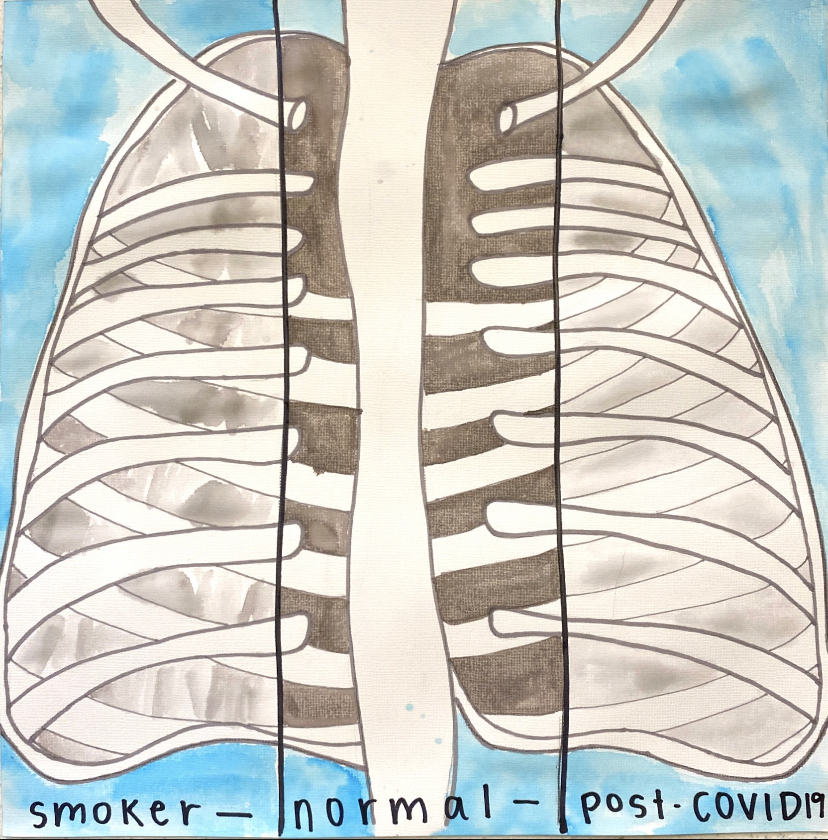
For my project I was interested in the effects of diseases on the tissue and function of the respiratory system, specifically in the case of COVID-19. Although there is much that we are still learning about this evolved killer, many studies and doctors have concluded that in severe cases of acute respiratory distress syndrome caused by COVID-19, post-infected lungs are significantly more damaged than lungs of habitual smokers. This is primarily due to the trauma to the lungs from breakdown of the alveolar epithelial tissue and buildup on the alveolar walls. This finding is extremely interesting- and frightening. As we grow up we are taught that smoking is bad for our health and to stay away from it; therefore I believe that this finding provides a great reference for how dangerous this respiratory disease can be, and why we should continue to follow necessary precautions to prevent the spread of is.
For the art aspect, I decided to do an illustration using water paint. I outlined a chest X-ray and divided into three sections; the water paint allowed me to easily show transparency and variation of shades as you would typically see in an X-ray. The middle section represents a normal lung: its consistent darkness throughout represents the air and gas exchange that is occurring. The left represents smokers’ lungs: the black and white shows scarring and congestion. Finally, the right section is a post-COVID-19 lung: the grey shade represents severe inflammation and the presence of infection.

Acute Respiratory Distress System (ARDS) is characterized by severe damage to the lungs that results in fluid buildup and prolonged inflammation of the alveoli. This afflictions leads to the breakdown of alveolar epithelia tissue effectively destroying the alveoli walls leading to decreased respiratory capacity and the coating of alveoli in debris. Typical symptoms are shortness of breath and fatigue due to the poor gaseous exchange in the damaged lungs. When we consider the etiology of the disease most people will assume poor life choices such as smoking lead to the affliction. However, with the arrival of COVID-19 we are seeing similar results in a much shorter period of time. In fact some research has indicated that post COVID-19 lungs are worse than a habitual smokers lungs. Some of this conclusion is based on functionality as well as x-ray findings. When viewed through x-rays a healthy set of lungs appear black in color as they are full of air and not under duress. In those with lung damage from habitual smoking it is common to see some areas of black with white lines indicating scaring. In instances of COVID-19, lungs appear grey in color as it is reflecting the sever congestion occurring. As we continue to learn more about the disease and its potential short and long term effect its evident the general public still needs to be concerned and take necessary precautions. It may be a good idea to examine life choices as well to limit the amount of core morbidities present, thus increasing the likelihood of surviving a bout with COVID-19.